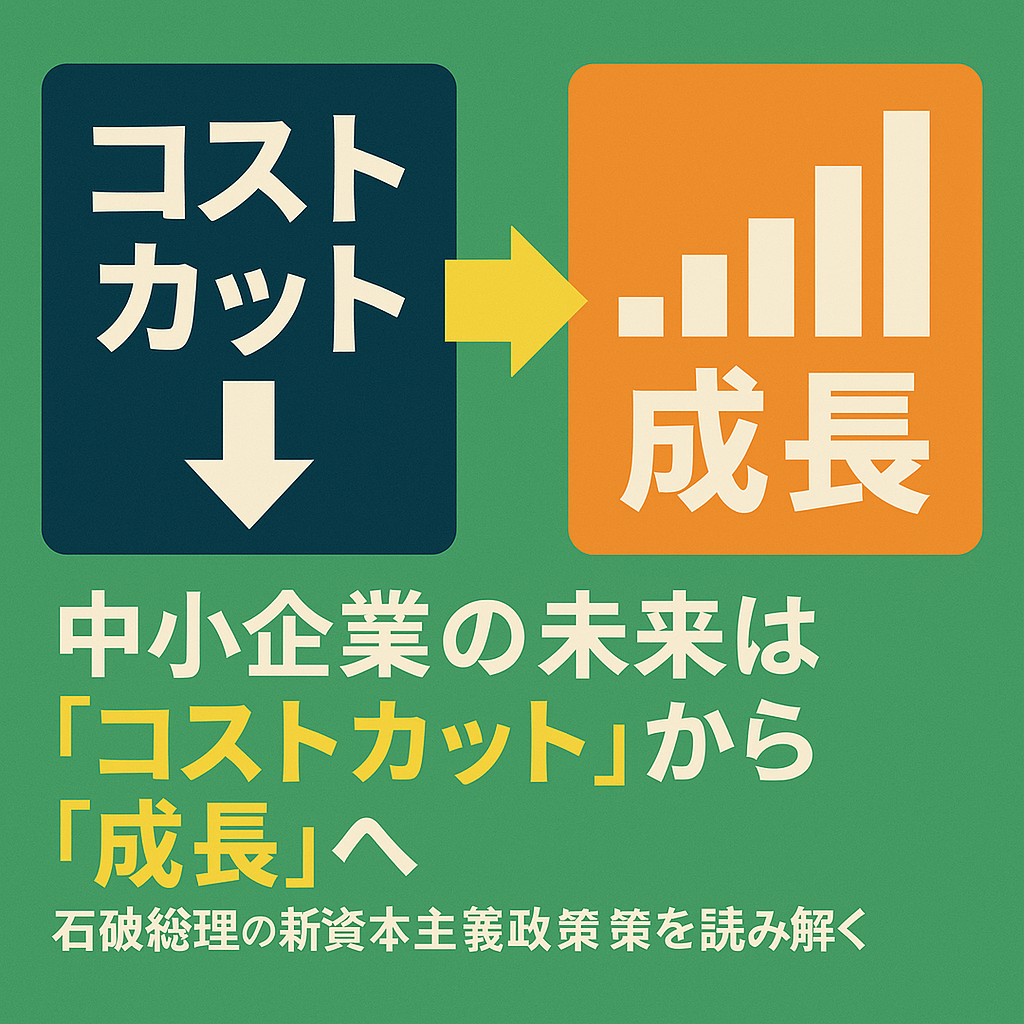On March 28, 2025, a potentially transformative policy direction for small and medium-sized enterprises (SMEs) was unveiled at the “Council for the Realization of New Capitalism,” led by Prime Minister Shigeru Ishiba. The key phrase was: “From cost-cutting management to growth-oriented management.” This single line holds vital clues about the future of Japan’s economy.
In this article, we explore the Prime Minister’s statements and the three pillars of the new policy to better understand its intentions and potential impact.
The Limits of Cost-Cutting and the Path to a Growth-Oriented Model
For years, Japanese SMEs have fought to survive by focusing on cost reduction—relying on cheap labor, subcontracting structures, and endless price negotiations. But this is no longer a growth strategy; it has become a strategy of exhaustion.
Prime Minister Ishiba calls for a break from this cycle. His message is clear: SMEs should be the driving force behind the economy by strengthening themselves through wage increases, investment, and productivity improvements.
The Three Pillars of the Policy: Expectations and Challenges
- Price Pass-Through and Fair Business Practices
SMEs lacking the power to negotiate prices are being crushed under rising raw material and labor costs—this is fundamentally unsustainable. Strengthening the ability of SMEs to pass on costs in government procurement is a crucial step to protect the backbone of regional economies.
However, the effectiveness of this policy depends on how it’s implemented on the ground. Key questions remain: How will authorities monitor large corporations to prevent exploitative pricing? How will transparency in negotiations be ensured?
- Support for Productivity and Labor-Saving Investments
The focus on the service sector is a notable aspect of the policy. In areas suffering from severe labor shortages, promoting labor-saving investment—through digital transformation (DX) and machinery—is a logical step.
Still, investment always carries risks. How well can the government support SMEs facing concerns like “We want to innovate, but lack funding” or “We’re uncertain about when results will show”?
- Business Outlook and Succession Support
The biggest management challenge for many SMEs is the shortage of successors. Strengthening support for M&A and facilitating matches with reliable buyers are essential for preserving jobs and technical know-how in local areas.
That said, M&A success hinges on trust. Without proper oversight and clear guidelines to prevent exploitative acquisitions, the entire system could falter.
A Shift in Social Values Under “New Capitalism”
This new policy is more than just support for SMEs. At its core lies a vision to instill a new economic ethic: companies should value people, invest in them, and grow together.
Growth isn’t just about numbers—it’s about creating workplaces where people want to work and nurturing industries that people want to stay in. Whether society as a whole can embrace this shift is the question. And it’s one that affects each and every one of us.
Conclusion
The transition to a “growth-oriented management” model promoted by Prime Minister Ishiba represents both an opportunity and a challenge for SMEs. For these policies to take root at the ground level, more than government support is required—businesses must change their mindset, and local communities must offer understanding and cooperation.
The shift from “cutting costs” to “creating value” has just begun.

